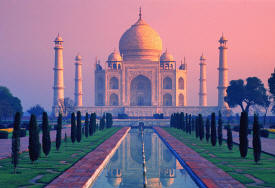'You will lose an ally' if accusations continue, Pakistan warns US
Reuters
Sep 23, 2011
ISLAMABAD: Pakistan's foreign minister said on Thursday that the United States risks losing an ally if it continues to publicly criticise Islamabad's performance in the war against militancy.
"You will lose an ally," Hina Rabbani Khar told Geo TV in New York. "You cannot afford to alienate Pakistan, you cannot afford to alienate the Pakistani people. If you are choosing to do so and if they are choosing to do so it will be at their (the United States') own cost."
Khar was responding to a Senate testimony by the outgoing chairman of the Joint Chiefs of Staff, Admiral Mike Mullen, who said Pakistan's top spy agency was closely tied to the Haqqani Network, the most violent and effective faction in the Afghan Taliban insurgency.
Source: The Times of India,
http://timesofindia.indiatimes.com/world/pakistan/You-will-lose-an-ally-if-accusations-continue-Pakistan-warns-US/articleshow/10087872.cms
Sep 23, 2011
ISLAMABAD: Pakistan's foreign minister said on Thursday that the United States risks losing an ally if it continues to publicly criticise Islamabad's performance in the war against militancy.
"You will lose an ally," Hina Rabbani Khar told Geo TV in New York. "You cannot afford to alienate Pakistan, you cannot afford to alienate the Pakistani people. If you are choosing to do so and if they are choosing to do so it will be at their (the United States') own cost."
Khar was responding to a Senate testimony by the outgoing chairman of the Joint Chiefs of Staff, Admiral Mike Mullen, who said Pakistan's top spy agency was closely tied to the Haqqani Network, the most violent and effective faction in the Afghan Taliban insurgency.
Source: The Times of India,
http://timesofindia.indiatimes.com/world/pakistan/You-will-lose-an-ally-if-accusations-continue-Pakistan-warns-US/articleshow/10087872.cms





